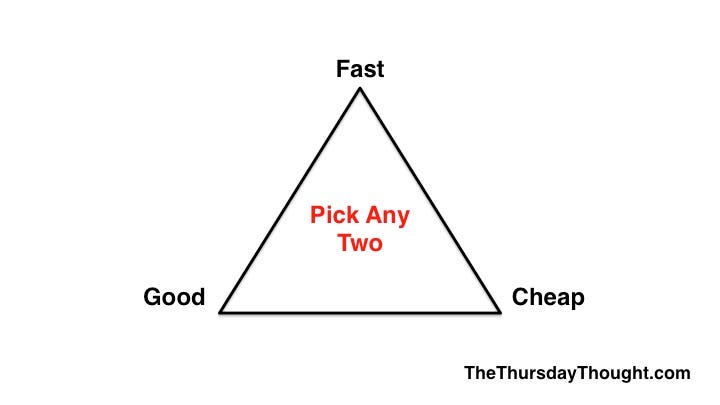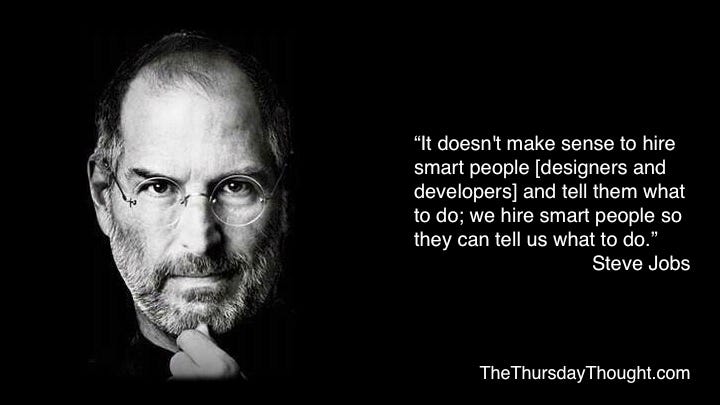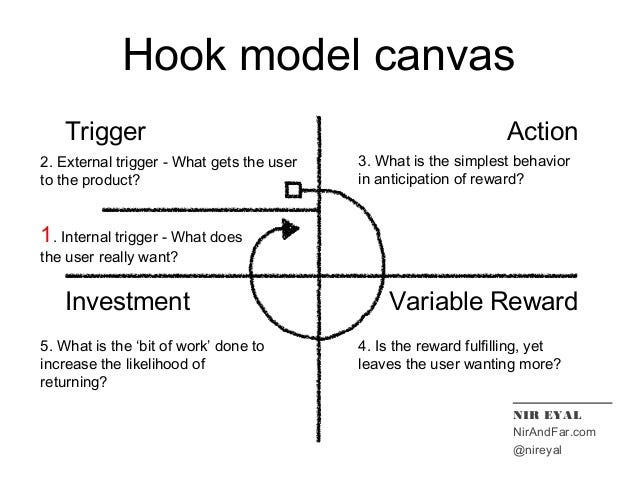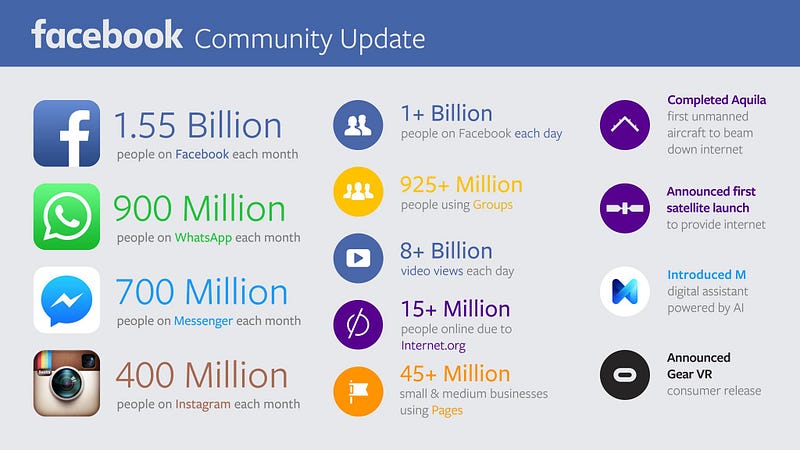
(Since writing this post, I have discovered Martin Grunburg, author of The Habit Factor and creator/inventor of the top productivity app sharing the very same name. Find out more here http://www.thehabitfactor.com.)
According to Greek legend the Gods condemned King Sisyphus to roll an immense boulder up a hill, only to watch it roll back down, repeating this action for eternity.
Although it is not a term that we hear in common parlance, tasks that are both laborious and futile are sometimes described as Sisyphean.
If a company is building products (digital or not) for today’s world and does not place the customer, (end-user or audience) at the centre of product development, then that is as Sisyphean as it gets.
One of the best ways to make your product a success is to make sure it is user centric and make it a habit for the user.
A Common Approach

The usual approach to building a digital product (app, website or platform) or upgrading an old one is some variation of the following.
There is some catalyst to build or update a digital product, perhaps a directive from the board, perhaps something as vague as “we need an app”. There is a sudden sense of urgency, a feeling that this needs to be done quickly and as cost-efficiently as possible.
The marketing team may take screenshots of a series of websites that they like the look of (not the feel of) and add them to a PowerPoint presentation, which will/may be sent to a designer or a web development team.
Despite the fact that as high as 80% of web traffic now happens on a mobile device, most or all of these screenshots are taken of desktop designs.
The team of developers (either in-house or contracted), the designer(s), the marketing team and the editorial team might get together and brainstorm the new site. Everyone will contribute a digital dime.
These ideas from this brainstorm are then harvested.
The designer hopes that this client will be the exception and do the right thing. Maybe this will be the client who builds a site for the audience and not base the site design on personal (or group) preference. Maybe this will be the client who hires an expert and let’s that expert do their job.
Then the designer, who has been disappointed in this process so many times in the past, tells herself to snap out of it.

All the information is distilled into a series of wireframes that attempt encapsulate everyone’s feedback. Everyone, that is, except the user.
A smaller company does a version of the above in a lot leaner manner. They don’t have the luxury of having time nor investment to obsess on their product, they just need to get it to market. Often it is the founder and CEO doing all of the above and may ask a few friends and family for some input. Perhaps this CEO opts for a WordPress site that they like, which caters for all or nearly all of their needs.
In worst-case scenarios, everyone’s input is catered for and you end up not getting it absolutely right, much like Fr. Ted.
https://www.youtube.com/watch?v=8mdwAkWvWMw?rel=0
It’s Alive
Once the site is signed-off by all interested parties; it is fully developed and launched. Everyone spends most of their time testing it on desktop and obsessing on how it looks on desktop, while most of the audience are on mobile.
Hopefully then, but not always, the product is optimised on a daily basis with a combination heat-mapping, data analysis and user engagement. Often times, the enthusiastic team may think that this is now a fait accompli and ignore the fact that the work is only beginning.
A website or product being live means it should be treated that way, as a living product. Therefore, it needs to be nurtured.
So, what is wrong with this approach some may say?
So what is Missing?
I recently heard Business Imagination Studio Katawave present their extensive 5 year research on the importance of obsessing about both People and Things.
Essentially, there are a slew of new products in the world that disrupt existing business models and indeed create new ones.
In tandem with these new products or services, people have evolved.
We have gone through many changes, no longer seeking satisfaction in accumulation of wealth and buying stuff. Now we seek fulfilment in life and exhibit a desire for meaningful experiences (not mere distractions).
Bearing in mind the People and Things model with our product development scenario above. Our error was that we had only approached our product development from the product (things) angle, we had forgot about the people. It goes deeper than how people will use our product, it is how people will feel when using our product.
The Habit Factor
To compete in an attention driven economy we have to create habit-forming products.
A product that it driven by habit is far more likely to succeed in a busy marketplace where the web is dominated by Facebook, Google, Apple or Amazon owned products, plus a melting pot of smaller players, who are probably hoping to be acquired by the ever-expanding platforms.
To compete against these platforms we need to create habit-forming products. To do this it is important to understand how a habit is formed.
How Habits are formed
Our brains are constantly seeking ways to conserve energy. To do this they look for short cuts.
Some routine short cuts include punching in your phone password or ATM password. You know when someone asks you what it is you sometimes can’t remember, but you can automate it when you need to?
That is your brain at work saving you precious energy. According to reporter for The New York Times and author of The Power of Habit, Charles Duhigg “40% to 45% of what we do every day sort of feels like a decision, but it’s actually habit.”
Now, think of what so many people do when they wake every morning, part of their morning ritual or habit.
· Alarm goes off on phone
· Pick up Phone (maybe after snoozing several times)
· Check Facebook, WhatsApp, Messenger, Instagram, Snapchat, Twitter, Email
· Get up
· Over breakfast, check Facebook, WhatsApp, Messenger, Instagram, Snapchat, Twitter, Email
· On commute check Facebook, WhatsApp, Messenger, Instagram, Snapchat, Twitter, Email and maybe a digital publisher site or app?
The goal for any product owner and business should be to be an ethical habit-forming product.

Author of Hooked Nir Eyal explains the 4-step cycle as follows.
1. The Trigger or Cue — An external trigger that gets us to try the product, advertising etc. Importantly a trigger can be time of day also.
2. The Action (activity or routine) — What we need to do to take action for example register online to simply use the product.
3. The Reward — The Fulfillment of the need that motivated us to take action, e.g. relieve boredom, connect socially
4. The Investment — what did we invest in the product, time or money.
A product will succeed if it can deliver these 4 stages and the user starts using the product with internal triggers. Internal trigger means the user no longer needs an external cue to use the product: like advertising or a reco-friendation (recommendation by a friend).
The internal trigger is the goal. This is when the user is hooked as they have some trigger to drive usage.
When a user forms a mental connection between using a product and a solution to their problem the product is on the path to success.
A user problem could be boredom and consuming content on a website or app could alleviate that problem of boredom.
Some examples

Coffee and Chocolate
In some coffee shops you get a free chocolate with your coffee. This has the dual benefit of giving you a habit of consuming the chocolate and drinking the coffee. For the coffee shop you usually become more loyal as a result and will seek out that coffee shop over others in a very crowded marketplace.
No such thing as a free lunch
Some supermarkets run special lunchtime offers that will offer a lunch bundle of a sandwich, chocolate bar or crisps and a drink. This all comes in cheaper than buying the sandwich on its own. Lunchtime is often a habit for most workers.
If the cue-routine-reward loop is strong you will maintain that habit. This is what lunch bundles like this achieve. These offers are often short-lived, but long enough to start a habit.
Freemium Models
A freemium model is a business model that aims to get the customer using a product long enough to create a habit. Habits are usually formed in 28 days. Most software as a service (Saas) trials last for 1 month, long enough to create the habit and recruit the trial customer as a paying one. Again, the product needs to follow the hook model and be easy enough to achieve habit status.
In gaming most games now follow a freemium model, where the game is free, but offers premium levels or extra levels as paid ones. The idea again is to get the user to form a habit so much so that they will pay.
Registration and Subscription
This is why we should obsess over things like user registration. This should be made ultra easy . There should be minimal barrier to entry. Think the minimal look to Google search or the ease-of-use of an apple product.

User Investment leads to better Habit Adoption
When there is an Investment, by the user that leads to a return on investment there is a higher likelihood of habit adoption. This is why Spotify premium users are more likely to use their subscription because they have paid for it.
Similarly, think of gym membership, people are more likely to use the gym if they have paid for it in advance than if they pay as you go.
Amazon Prime is an Amazon membership model that offers free shipping amidst other perks. In a 2014 study from RBC Capital we see that Prime members spend nearly twice as much on Amazon as non-Prime members do.
People don’t value things that are free, so having some element of investment leads to greater success.
Even if they pay a little amount they will value it more. This is why beta tests where users give feedback gives them a bit more ownership of the product, they are slightly more invested.
On a side note, as well as user investment habits are better formed if they are done at the same time each day on a regular basis.
An example is the Thursday Thought Blog, this goes out at the same time each week to ensure a habit can be formed and an expectation delivered.
Let your Product be its Advertising
Having a great product can be it’s own best advertising. Once it is great and solves a user problem, that user can then become an advocate.
If the product benefits from the network effect (where a product benefits by having more users, think the telephone, having one person with a telephone is not great, everyone having a telephone means everyone is better off) then the habit factor plus the network effect is going to increase the likelihood of a successful product.
Now lets think about Facebook, the company and the product suite.

Do I think Mark Zuckerburg thought this out and followed the hook model when creating Facebook?
No.
However, I do think he and his teams have realised it since.
Enter, Instagram, WhatsApp and Messenger.
All of these keep bringing you back to a Facebook owned product on a regular basis. All of these products boast huge daily active and monthly active usage and a a result high average revenues per user (ARPU).
All of these products have become huge successes because they are all based on a daily habit and the achievement of a habit factor.
For all the rest of us this is where the bar is set.
This is the challenge for any successful product, where does it fit in a user’s daily habit or where can it fit?
Next time we think about products let’s think about both People and Things.
Thanks for reading, if you liked this article please hit the heart button below as it will help others discover it.